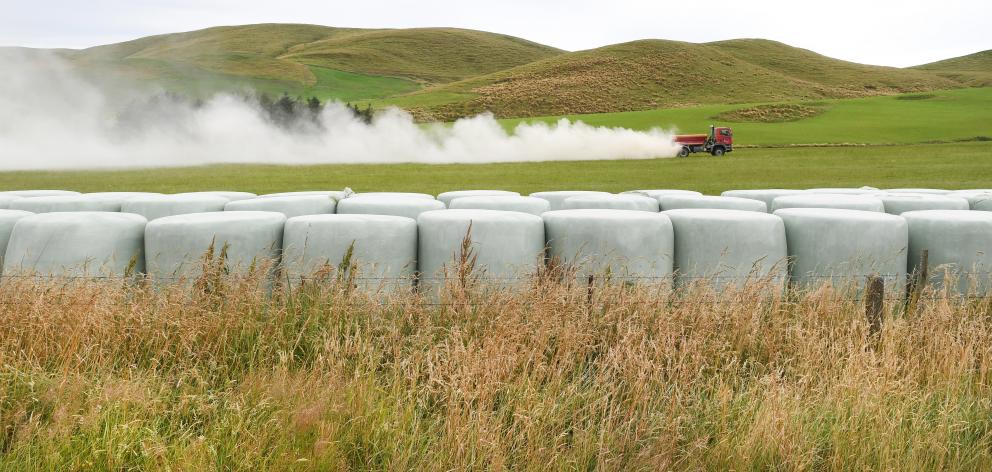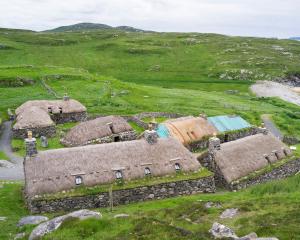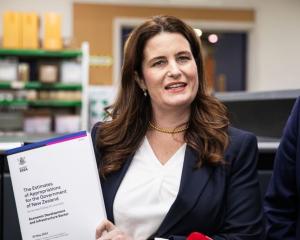
I wrote an opinion article "Better to focus on known cancer risks" in the Otago Daily Times in March 2022. Having rejected drinking water nitrate causing bowel cancer, I advised to focus on proven cancer risks and reducing nitrate risks to our freshwater ecosystems.
In the presence of phosphorus, freshwater ecosystems are sensitive to nitrate-nitrogen as low as 0.4 milligrams per litre in lowland rivers. Our lakes are vulnerable at substantially lower levels. Freshwater nitrate contamination is extensive and intensive which has become a serious environmental issue in New Zealand.
According to Stats NZ, in the past two decades, 48% and 58% of the monitored groundwater and river sites respectively worsened in nitrate pollution while 62% of the 101 monitored lake sites have been classified as poor to very poor in lake health. In 2017, livestock related nitrate-nitrogen leaching was 200,000 tonnes, of which 65% of the loading was attributed to dairying.
Our dairying has been built on grazed clover-ryegrass. Biologically, clover injects 200kg of free atmospheric-nitrogen per ha per year. When grazed, 15-20% pasture-protein is converted to milk protein and the remainder is excreted, of which 80% is urine-nitrogen.
Nitrate builds up in the urine patches, leaches and pollutes groundwater and subsequently surface water. Even cultivating well-established pasture soils could leach 100kg per ha nitrate-nitrogen because of organic matter breakdown. The above indirect leaching is without any synthetic-nitrogen use.
Unlike clover, ryegrass has greater appetite for nutrients, which responds readily to synthetic-nitrogen application. Despite the free clover-nitrogen, tactical input of synthetic nutrients is needed to boost pasture growth for commercial conventional milk production. The good news is when applied in small quantities such as 20-25kg per ha, there is little or no direct leaching from synthetic-nitrogen. However, when applied cumulatively and more than 200kg per ha annually, direct leaching occurs. The challenge is to control both direct and indirect leaching.
Well-managed dairying using proven mitigation tools is sustainable anywhere in New Zealand. Heavy use of synthetic-nitrogen has been the main culprit, not the strategic use. Increasing milk production by increasing herd size without utilising its full genetic potential demands substantially more pasture which warrants greater synthetic-nitrogen use. The result is increased nitrate leaching. The above scenario vilifies stocking rates. Reducing the stocking rate without reducing synthetic-nitrogen use will not cut the mustard. Field trials have shown that for a given fertiliser-nitrogen loading, increasing the stocking rate will not increase nitrate leaching. I can demonstrate this on a macro-scale as well.
Between 2001-19, cow numbers increased from 3.49 million to 4.95 million, dairying land from 1.33 million ha to 1.74 million ha, the stocking rate from 2.62 to 2.84 cows per ha, milk-solids from 307 kg to 381 kg per cow and synthetic-nitrogen use from 95,590 tonnes to 196,569 tonnes. Synthetic-nitrogen use increase has been inconsistent with all other increases. While in the above period the low-protein imported palm kernel expeller feed use increased from 57 to 38,154 tonnes nitrogen-equivalent, there is no compelling evidence of farm supplements increasing nitrate leaching.
In the past two decades, there has been a major attitude shift by our dairy farmers using synthetic-nitrogen from tactically to all-year-round to boost pasture feed. Between 2001-19, the shift has been prominent in the irrigated Canterbury region from 13,000 to 53,000 tonnes while in Waikato from 34,000 to 53,000 tonnes. There is no agronomic rationale for such a shift with skyrocketing feed supplement use and inherently excessive pasture protein.
The dairy industry’s own data indicates that when annual synthetic-nitrogen use exceeds 100kg and 200kg per ha, milk-solids drop to 15kg and 10kg per kg synthetic-nitrogen respectively. Consequently, reduced profit is more apparent on farms using high synthetic-nitrogen when milk price falls. Recognising the above situation, in 2019, DairyNZ cautioned farmers to revert to tactical synthetic-nitrogen use. Given the volatility of the global milk price and increasing fertiliser prices and interest rates, synthetic-nitrogen-driven dairying is economically and environmentally risky.
Undeniably, the $22 billion "cash-cow" has been our best export earner which is 50% of all agricultural-horticultural export earnings. Enormous economic benefits percolate to all New Zealanders including the dairying critics. Most dairy farmers will agree our world-class dairying must not be at the cost of declining water quality.
Sustainable dairying is balancing between productivity and the environment which must be ingrained in the business plan.
Based on the dairy industry’s own quality research, I am confident efficiency-based synthetic-nitrogen use will yield win-win outcomes while alleviating many negative effects. If radical industry-driven or individual voluntary synthetic-nitrogen use reduction is not initiated soon, regulatory interventions are inevitable to curb the declining freshwater quality.
Central government has already responded by capping pastoral farming synthetic-nitrogen use at 190kg per ha per year via National Environmental Standards for Freshwater 2020. Unfortunately, the above evidence-void and ad-hoc regulation has been estimated to achieve only 6.6% reduction in overall nitrate leaching.
At present, the ball is in the regional councils’ court to curb nitrate pollution using the new freshwater planning process by controlling land use inputs and/or activities as per the National Policy Statement for Freshwater Management 2020. To be effective and acceptable, rules controlling synthetic-nitrogen use must be in consultation with the dairy industry, fit for purpose, technically defensible and strike a harmony between environment and economy, proven by robust cost-benefit evaluation required under the Resource Management Act.
— Dr Selva Selvarajah is the founder of Enviroknowledge which trains environmental professionals.












